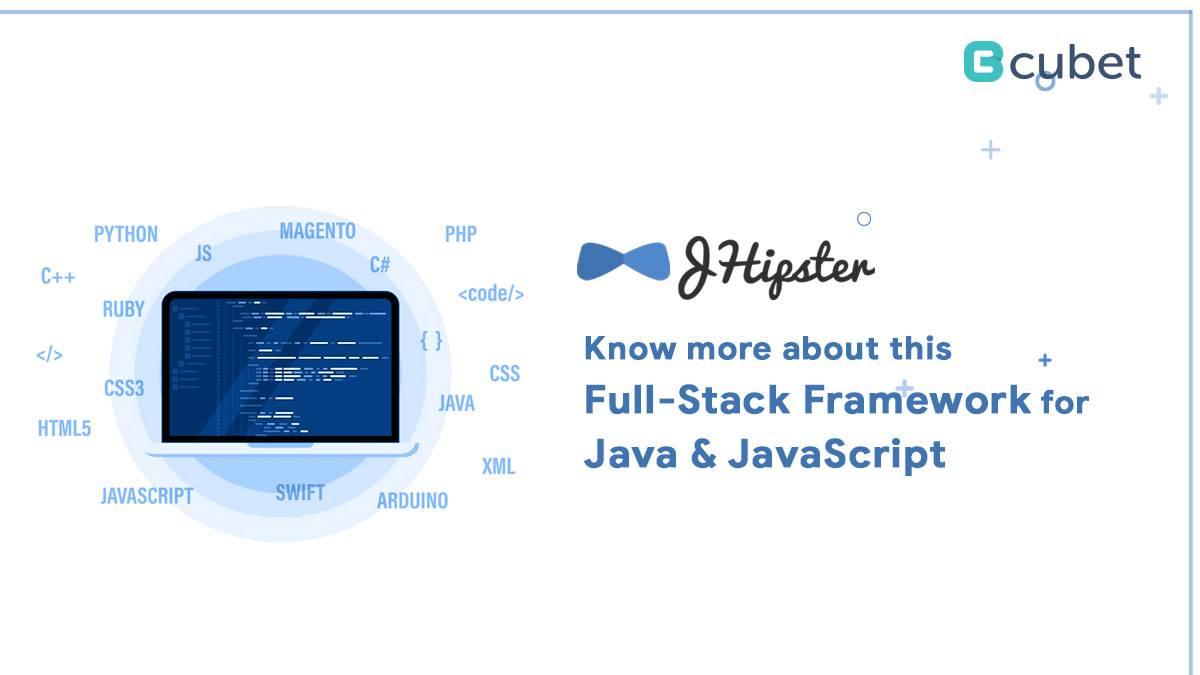JHipster: Know More About This Full-Stack Framework for Java & Javascript

What is JHipster?
JHipster is a full-stack Java & JavaScript project generator that can be used to develop complex applications. It is an open-source stack that allows developers to focus on the business requirements of their application while it handles the non-functional requirements.
It is essentially a Yeoman generator that creates an application in the shape of an angular application. This means you can hop into the project and get going without worrying about the project’s structure. However, it ultimately depends on your preferences as a developer.
What are the Benefits of Using JHipster?
JHipster is a development platform where it offers monolithic and microservice web applications and APIs. It provides a modern toolchain, a rich feature set, and a strong focus on application security.
It provides a complete development environment for developing web applications and microservices. It includes a project generator, a code generator, and a wide range of tools and libraries.
It is based on Spring Boot and uses the Java language. It is launched under the Apache License 2.0, an open-source program.
JHipster offers many benefits, including:
- Modern toolchain:
JHipster uses the latest technologies and standards, such as Java 8, Angular 4, and Bootstrap 4.
- Rich feature set:
JHipster offers many features, such as UAA authentication, a microservice architecture, and a reactive programming model.
- Strong focus on application security:
JHipster provides several features to help secure your application, such as OAuth 2.0 support and a secure development environment.
How to Set up JHipster?
JHipster is a powerful development tool that makes it easy to create, build, and deploy Spring Boot and Angular web applications. Setting up JHipster is simple and straightforward. In this article, we’ll walk you through the steps necessary to get JHipster up and running on your computer.
The first thing you have to do is, you have to install the JHipster CLI (command line interface). You can do this using npm, the Node.js package manager. If you don’t have NPM, you can get it from the official website of Node.js.
- Once you have npm installed, you can install the JHipster CLI using the following command:
npm install -g generator-jhipster
- Once the CLI is installed, you’ll need to create a new directory for your JHipster project. You can do this using the mkdir command:
mkdir my-jhipster-project
- Once the directory is created, you can navigate into it and generate your project using the jhipster command:
cd my-jhipster-project jhipster
This will start the JHipster project generator. After that, You need to answer some questions about your project, likewise; as the name, database, and authentication method. Once you’ve responded to all the questions, JHipster will generate your project.
- You can now run your project using the
./mvnw spring-boot:run command.
- You can access your application at http://localhost:8080
How to Use the Generator?
Generators are a powerful tool for scaffolding and code generation in JHipster. By default, JHipster provides several built-in generators to help you start your project.
To use a generator, simply invoke the jhipster command with the generator name and any required options.
For example, to generate with Entity generator, you would run the following command for post hooks (generators/entity/index.mjs)
import chalk from ‘chalk’;
import { GeneratorBase } from ‘generator-jhipster’;
import { INSTALL_PRIORITY } from ‘generator-jhipster/priorities’;
export default class extends GeneratorBase {
constructor(args, opts, features) {
super(args, opts, features);
if (this.options.help) return;
if (!this.options.jhipsterContext) {
throw new Error(`This is a JHipster blueprint and should be used only like ${chalk.yellow(‘jhipster –blueprints myBlueprint’)}`);
}
this.sbsBlueprint = true;
}
get [INSTALL_PRIORITY]() {
return {
async afterRunHook() {
await this.composeWithJHipster(`my-blueprint:entity-module`, {
entityConfig: this.options.jhipsterContext.context,
});
},
};
}
}
There are several other generators available to help you scaffold your JHipster project. For a full list of generators, see the JHipster documentation.
How to Deploy JHipster?
There are several cloud platforms where you can deploy your project through Jhipster, such as;
- Heroku
For this, you need to create an account in Heroku. After that, you have to run the command as follows
jhipster heroku
- Deploy in AWS
To deploy your project in AWS, follow the command as follows
jhipster aws
- Deploy in Kubernetes
Use the command as follows
jhipster kubernetes
Conclusion
With JHipster, you can build an application in no time. It might not be a good idea to use JHipster for your next project, especially if you are new to web development, but it is an excellent framework for building the core of your application faster.
JHipster is a full-stack framework that enables developers to build a new application in Java and/or JavaScript. It incorporates all the benefits of the two platforms in a single stack.